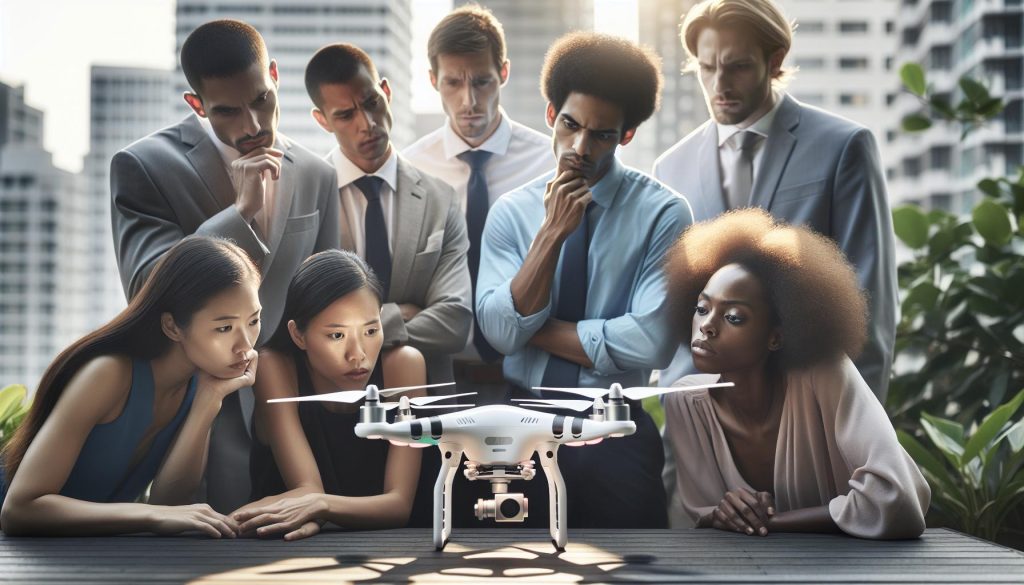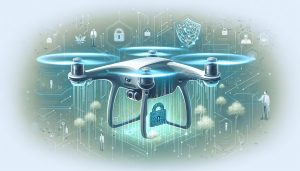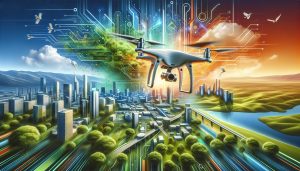As drone technology continues to soar in popularity, concerns about the privacy and security implications of using DJI drones have emerged into the spotlight. With allegations of sensitive data potentially being accessed or misappropriated, these worries are not just technical; they touch on basic principles of privacy and national security. DJI’s Local Data Mode offers some reassurance by enabling users to operate without an internet connection, which helps mitigate risks associated with data transmission. However, debates continue regarding how flight logs and images are processed and where that data ultimately resides. Understanding whether DJI drones pose a security risk is significant for both casual users and professionals alike, prompting questions about data control, system transparency, and privacy protection. Join us as we delve deeper into this pressing issue, examining the evidence, expert opinions, and the steps you can take to ensure safe and responsible drone usage.
Understanding DJI Drones and Their Technology
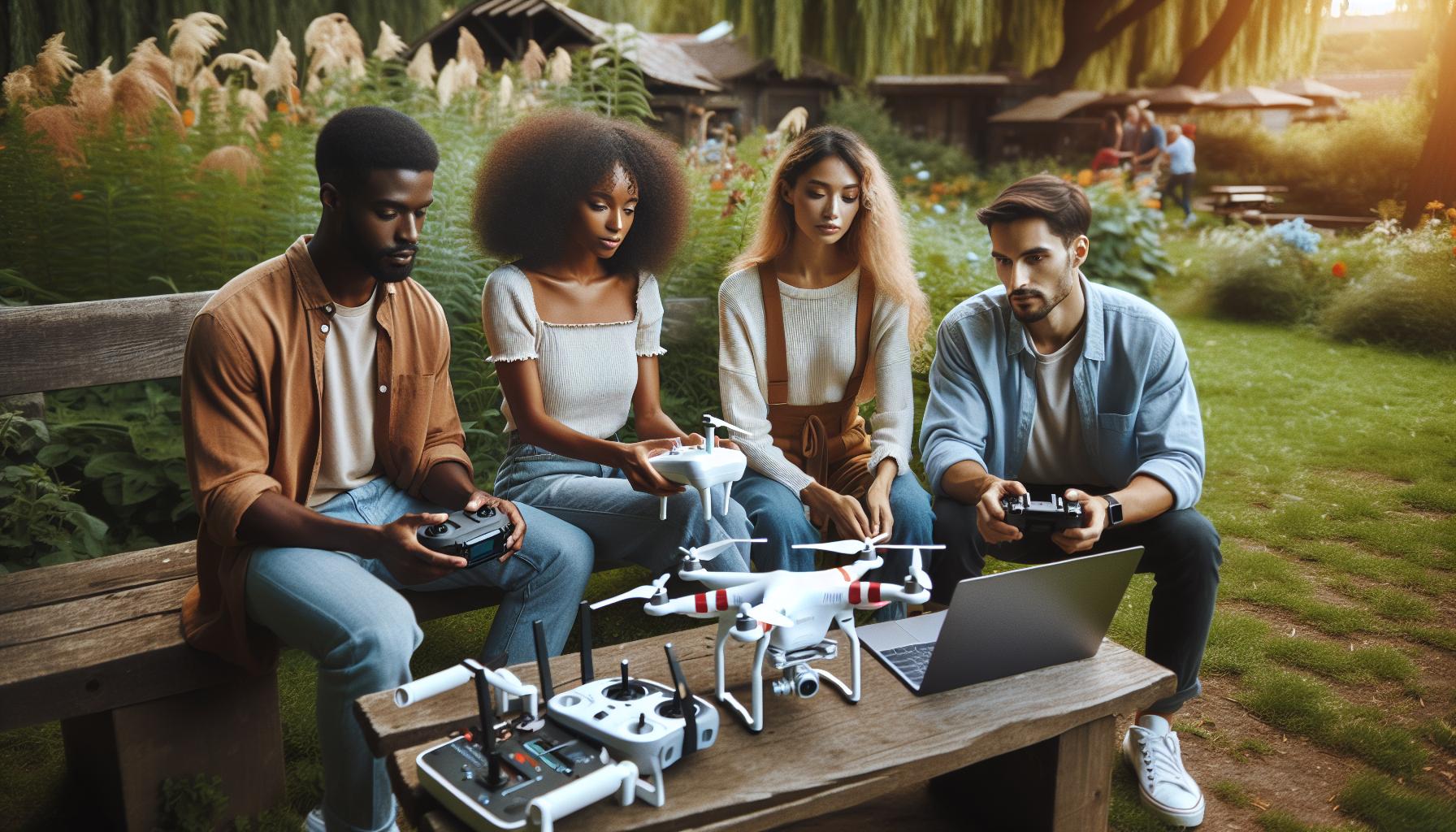
The world of DJI drones is an intricate blend of cutting-edge technology and user-friendly design, making them a popular choice for both hobbyists and professionals. Each model offers remarkable capabilities, from high-definition video capture to automated flight functions that enhance user experience. With features like obstacle avoidance, intelligent flight modes, and advanced stabilization systems, DJI has pushed the boundaries of what consumers can achieve in aerial photography and videography. These drones leverage sophisticated algorithms to optimize flight performance, enabling users to execute complex maneuvers with ease, whether in open airspace or confined environments.
Understanding the hardware behind these powerful machines is critical for users aiming to maximize their potential. DJI drones typically utilize a combination of GPS and real-time data from various sensors to ensure stable flight and accurate positioning. The flight controller serves as the brain of the drone, processing input from both the user and the environment, which allows for responsive control. Furthermore, the integration of various camera technologies enables high-quality imaging, often surpassing traditional cameras in versatility and ease of use.
When operating a DJI drone, it’s essential to familiarize oneself with the software that powers these devices. The DJI Fly App or DJI GO 4 app enhances user experience by offering intuitive flight planning, live video feeds, and access to various settings. Regular firmware updates are crucial, as they improve performance and introduce new features. It’s advisable to establish a routine for checking and applying updates to maintain optimal functionality and security. With such rapidly evolving technology, continuous learning allows users to fully explore the capabilities of their devices while adhering to best practices for safe and responsible operation.
Key Privacy Concerns with DJI Drones
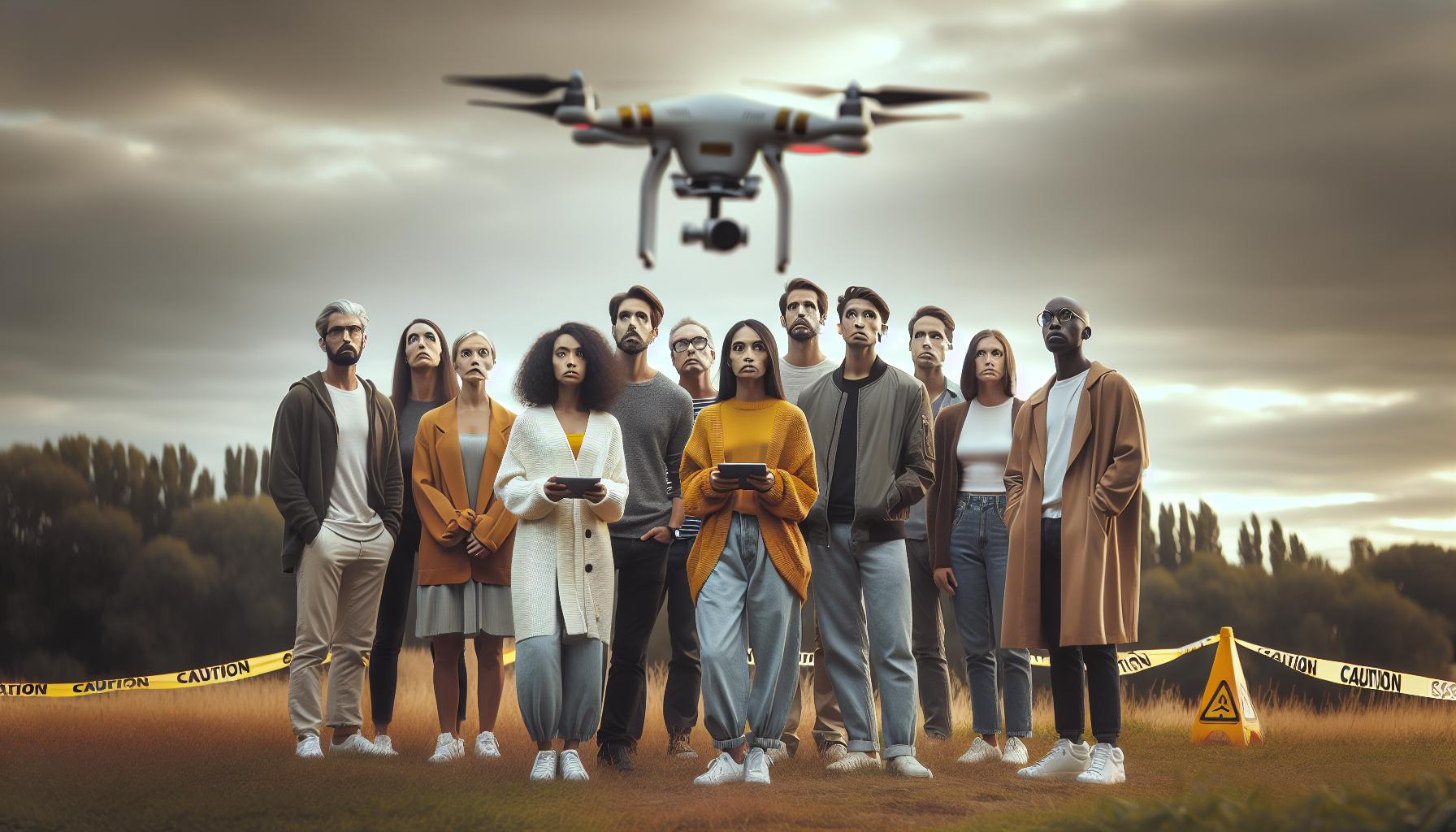
The increasing popularity of DJI drones has brought to light several privacy concerns that potential users must consider. With their advanced capabilities in capturing high-resolution images and videos, these drones often fly in residential areas, parks, and sensitive locations, raising questions about data collection and surveillance. Users should be particularly aware of how their flights can unintentionally invade the privacy of individuals, making it essential to understand the boundaries of ethical flying.
One significant area of concern is the collection and storage of data through drone operations. DJI drones are equipped with various sensors and cameras that can gather substantial amounts of information, not just from the user’s intended target but also from the surroundings. This raises issues around who has access to this data and how it might be used. For instance, video footage and imagery captured could potentially be shared with third parties or analyzed for commercial purposes without the knowledge of those photographed or observed, sparking fears around privacy violations.
It’s also important to consider the implications of the underlying technology that supports DJI drones. These devices often require connections to the internet for features such as software updates and live streaming capabilities. This connectivity introduces vulnerabilities that could be exploited, leading to unauthorized access to user data or even drone control. Maintaining strong cybersecurity measures, including regular firmware updates and secure user authentication, is crucial for mitigating these risks.
To address privacy concerns effectively, drone operators should adhere to local privacy laws and guidelines, ensuring they fly in compliance with regulations that protect public privacy. This includes obtaining consent when filming in private areas and being mindful of the flight paths and operational altitudes around populated regions. By fostering a responsible drone culture and prioritizing privacy, users can help alleviate the security risks associated with DJI drones while enjoying their advanced functionalities.
Data Collection Practices of DJI Drones
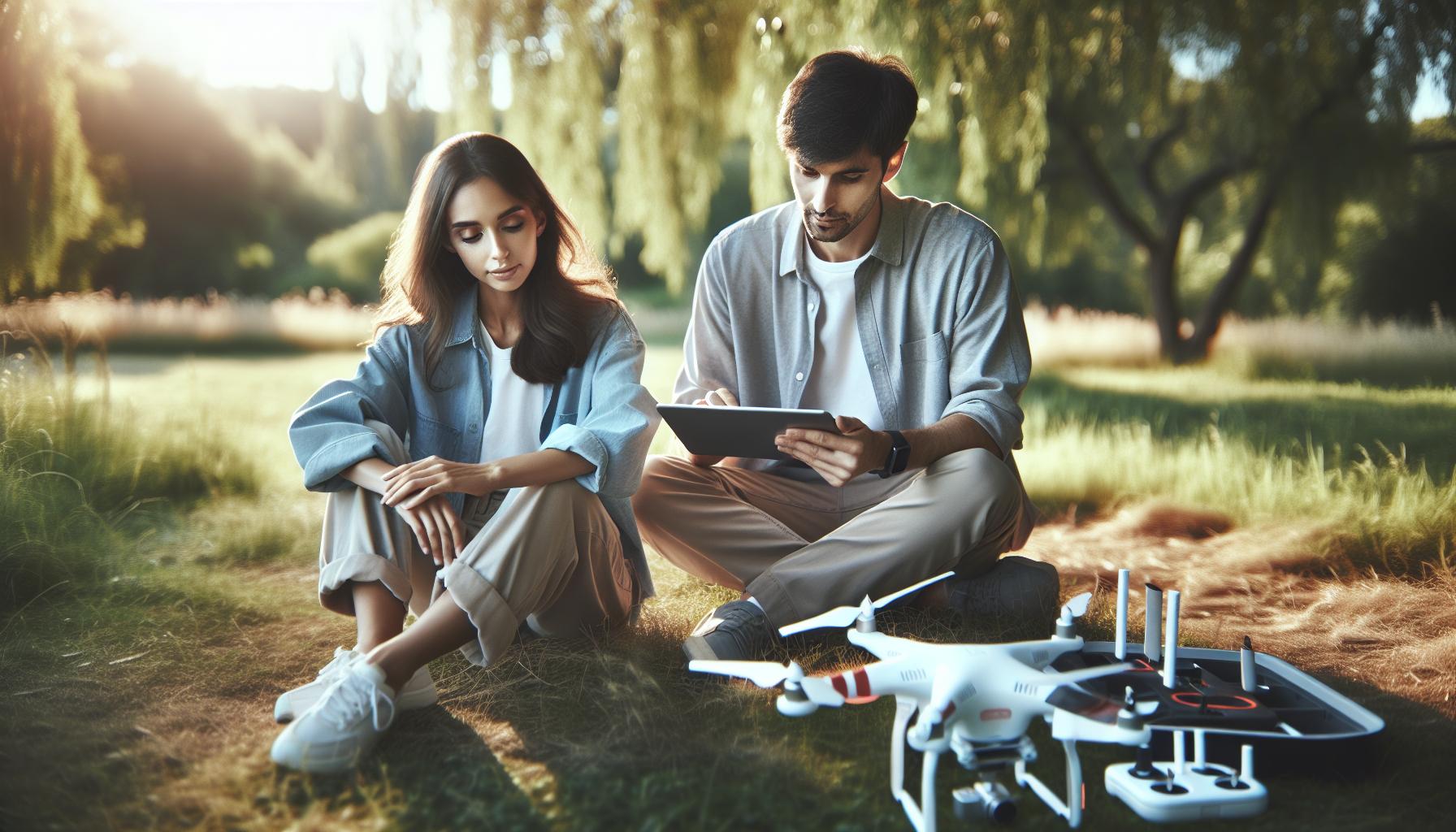
The capabilities of DJI drones extend beyond mere photography and videography; they possess sophisticated data collection practices that can inadvertently raise privacy concerns. Equipped with high-resolution cameras and various sensors, these drones capture not only the focused imagery intended by the operator but also surrounding areas, accumulating a wealth of information. This leads to significant questions regarding how this data is handled, stored, and eventually shared.
When a DJI drone is deployed, it records a variety of data points such as geolocation, altitude, speed, and environmental conditions. This collected data can be invaluable for agriculture, construction, emergency response, and entertainment industries. However, it also has the potential to infringe upon the privacy of individuals who may not have consented to being recorded. For instance, if a drone flies over a residence or private property, the footage captured can include sensitive interactions or occupants, raising ethical issues and concerns about surveillance without consent.
To mitigate these risks, operators should consider robust protocols for data handling and usage:
- Awareness of Local Laws: Always be informed about local regulations governing drone usage to ensure compliance and respect for privacy.
- Clear Communication: If operating in areas where people might be present, communicate intentions and seek consent for aerial recording.
- Data Management Practices: Establish guidelines for storing, sharing, and deleting footage and data to prevent unauthorized access or misuse.
- Limit Data Capture: Only collect data necessary for the intended purpose, avoiding excessive footage that could infringe on privacy rights.
Moreover, DJI has integrated features into their software and hardware that aim to protect user data and maintain ethical flying practices. Regular firmware updates enhance security measures and address vulnerabilities. Operators are encouraged to stay updated with the latest releases to safeguard against potential data breaches or unauthorized drone access. Creating a culture of responsible drone use relies on not only understanding the technology but also being conscientious of the ethical considerations inherent in data collection practices.
Regulatory Framework for Drone Privacy

Navigating the regulatory landscape surrounding drone privacy is essential for operators seeking to utilize DJI drones responsibly and ethically. As drones have become more ubiquitous, governments have started to implement various regulations that address privacy concerns associated with airborne surveillance and data collection. Operators must keep themselves informed about these regulations to ensure compliance and mitigate the risk of infringing upon the privacy rights of individuals.
In many countries, drone usage is subject to a combination of aviation regulations and specific privacy laws. For example, in the United States, the Federal Aviation Administration (FAA) sets the framework for drone operations, while individual states may enact additional laws regarding photography and data collection. Operators should also be familiar with the General Data Protection Regulation (GDPR) if they are flying drones in the European Union, which has strict guidelines on data protection and privacy. Such laws typically require that individuals are informed when they are being recorded and that informed consent is obtained before capturing identifiable information.
Key Regulatory Considerations
When engaging with drone operations, users should be aware of a few critical regulatory considerations:
- Geofencing: Many DJI drones come equipped with geofencing features that restrict flight in sensitive areas, such as near airports or over large crowds. These restrictions help operators avoid legal infractions and safeguard individuals’ privacy.
- Flight Notifications: Certain regions may require operators to notify individuals or entities about upcoming drone flights in public areas or near private properties, thus promoting transparency.
- Data Storage and Usage: Regulations often dictate how long data can be stored and under what conditions it can be used, emphasizing the importance of implementing proper data management practices.
Adhering to these regulations not only protects the operator from potential legal conflicts but also fosters public trust in drone technology. As the regulatory framework continues to evolve, DJI drone operators should regularly review and update their knowledge of the applicable laws. Engaging with local drone clubs or associations can provide valuable insights and support for navigating this complex landscape, ultimately leading to safer, more responsible drone usage.
Preventing Privacy Breaches When Using Drones
Utilizing drones for photography, surveying, or other purposes can enhance efficiency and provide unique perspectives, but it also introduces significant privacy considerations. To prevent privacy breaches while using DJI drones, operators must adopt a proactive approach to both technology and ethics in their flight practices. Failing to do so not only jeopardizes personal privacy but can also lead to legal repercussions and damage to one’s reputation.
One practical step is to familiarize yourself with the drone’s settings and data collection capabilities. DJI drones often come with features that allow you to adjust how data is captured, stored, and shared. For instance, you can disable or limit data collection when flying over private property or populated areas. It’s imperative to configure your drone so that it operates within legal boundaries and respects spatial privacy-this might include utilizing the drone’s geofencing features to avoid restricted areas.
Furthermore, fostering transparency during operations can be beneficial. If you’re flying in a public or semi-public space, consider informing individuals nearby about your drone flight. Not only does this respect their privacy, but it also helps build trust within your community. In some regions, regulations may even require that you notify people before recording their likeness. Keeping communication open can minimize conflict and misunderstanding, fostering a more positive relationship between drone operators and the public.
Lastly, robust data management practices are essential for preventing breaches. Regularly updating your drone’s firmware ensures you benefit from the latest security patches and features. Always review the stored data after each flight session and responsibly delete footage that isn’t necessary, particularly if it contains identifiable information of individuals who did not give their consent. Incorporating these practices into your routine not only protects individuals’ privacy but also reinforces your position as a conscientious drone operator.
By remaining informed and applying these strategies, drone users can significantly mitigate the risks associated with privacy breaches, contributing to a safer and more responsible use of aerial technology.
Security Vulnerabilities Associated with DJI Drones
The sophistication of DJI drones comes with inherent security vulnerabilities, which potential operators must understand to safeguard their data and privacy. For instance, many DJI drone models feature built-in Wi-Fi connectivity for seamless communication with mobile applications. However, this can also open the door to unauthorized access if suitable precautions are not taken. Should an attacker intercept the drone’s signals or gain access to the associated app, they could potentially hijack flight controls or access sensitive data stored within the device.
One notable concern is the risk of data breaches resulting from insufficient encryption. While DJI has employed various measures to encrypt communication between the drone and the controller, vulnerabilities can still exist, especially in older models or unpatched firmware. Regular firmware updates are crucial as they often contain security patches designed to address these vulnerabilities. Make it a practice to frequently check for updates via the DJI app, ensuring that your drone operates with the latest security improvements.
Furthermore, the software ecosystem surrounding DJI drones, including the mobile applications, can be a weak point. These apps may access various permissions on your device, storing flight logs, photos, and videos that could become a target for malicious entities. Reviewing the app’s permissions and ensuring it only accesses necessary features can mitigate some of these risks. Users should be mindful of data management, including regular reviews and deletions of unnecessary or sensitive footage, to lower the chances of information falling into the wrong hands.
Finally, understanding the regulations governing drone use in your region contributes to better security practices. Unauthorized surveillance is not just a privacy risk but also a legal one. Familiarize yourself with local regulations regarding drone operation to avoid potential legal complications. Cultivating awareness of both the technological and regulatory landscapes helps drone operators navigate the inherent challenges, thereby fostering safer and more responsible use of this dynamic technology. By addressing these vulnerabilities proactively, DJI drone pilots can enhance their flying experience while mitigating risks associated with privacy and security breaches.
Comparing DJI Drones: Security Features of Each Model
When it comes to enhancing security and privacy, DJI has equipped its various drone models with features tailored to address the concerns of both hobbyists and professional users. Understanding the security features across different DJI drone models can empower operators to make informed choices, especially in an era where data privacy is paramount.
Model Highlights
DJI’s lineup, including the Mavic, Phantom, Mini, and Air series, presents a range of security measures unique to each model:
- Mavic Series: Mavic drones, such as the Mavic Air 2, come equipped with advanced data encryption protocols that secure communication between the drone and controller. The Mavic Pro also supports Local Data Mode, allowing operators to control their drones without an internet connection, significantly reducing the risk of unauthorized data access.
- Phantom Series: The Phantom series emphasizes robust security features including geofencing, which prevents flights in restricted areas, and firmware update notifications that ensure the highest security standards are maintained. These drones also utilize both hardware and software encryption to protect data integrity.
- Mini Series: The Mini drones, while compact and lightweight, do not compromise on security. They also include Local Data Mode, allowing users to restrict data sharing. Moreover, the app requires specific permissions, ensuring users have control over their information.
- Air Series: The Air 2S is notable for its comprehensive safety features, including obstacle sensors that maintain flight safety and safeguard against unintentional crashes while ensuring data protection due to its stringent connection protocols.
Feature Comparison Table
| Model | Data Encryption | Local Data Mode | Geofencing | Obstacle Avoidance |
|---|---|---|---|---|
| Mavic Series | Yes | Yes | No | Yes |
| Phantom Series | Yes | No | Yes | Yes |
| Mini Series | Moderate | Yes | No | No |
| Air Series | Yes | Yes | No | Yes |
A consistent thread across these variations is DJI’s commitment to enhancing user control over sensitive data. Users are encouraged to leverage features like Local Data Mode when conducting sensitive operations, effectively isolating the drone from external networks and mitigating risks associated with data leaks. Understanding these distinctions not only aids in making better purchasing decisions but also enhances safe operating practices for drone pilots across different environments.
User Experiences: Security Risks and Privacy Issues
User testimonials and experiences reveal a mixed bag of sentiments regarding privacy and security when using DJI drones. Some users express confidence in DJI’s efforts to safeguard data, buoyed by features like Local Data Mode, which allows operations without an internet connection, effectively isolating flight logs and imagery from potential online threats. This mode is particularly favored by professionals conducting sensitive missions in mapping or surveillance, who report a reduced anxiety about unauthorized data transmission. The assurance that, during the Local Data Mode, no data is sent to DJI’s servers or any external infrastructure has led some operators to embrace DJI products as a trusted choice for secure drone operations.
However, despite these features, concerns regarding data security persist among users. High-profile cases and ongoing scrutiny from privacy advocates have left some operators questioning whether their data is truly secure. For instance, reports of DJI products being used for surveillance and the potential for data interception during flight have raised red flags. An instance shared by a professional operator involved in public works highlighted a situation where sensitive project images captured by the drone prompted concerns about who might access that data if the drone were to connect online. This scenario illustrates the ongoing debate around whether adequate measures, like encryption and Local Data Mode, are sufficient to protect sensitive data in all operating conditions.
There’s also the aspect of user experience involving firmware updates and the handling of personal data. Many users appreciate the regular updates provided by DJI, which often enhance security protocols and add features. However, some have reported complications with updating process that momentarily disrupted operations, leading to frustrations and slowing project timelines. Acknowledging these user experiences helps underscore the importance of remaining informed about product updates and ensuring that necessary firmware patches are applied promptly to mitigate any vulnerabilities.
Ultimately, while DJI has taken significant strides in enhancing cybersecurity and privacy, controversy still surrounds its drones. It’s essential for drone operators to actively engage with the security features available, such as Local Data Mode and encryption protocols, while staying informed about potential risks. Regularly reviewing community feedback and remaining vigilant about data sharing practices can empower users to make the most of their DJI drones without falling victim to privacy breaches.
Best Practices for Safe Drone Operation
Understanding and implementing is essential for protecting not only the valuable data that your UAV collects but also ensuring compliance with legal and regulatory frameworks. As a user of DJI drones, you must integrate safe practices into your flying routine to mitigate privacy and security risks associated with aerial data collection.
A fundamental aspect of safe drone operations involves the use of Local Data Mode. This feature temporarily disables any data transmission to DJI servers while you operate your drone, significantly reducing exposure to potential breaches. Always activate this mode when flying in sensitive areas or capturing proprietary information. Additionally, ensure your drone’s firmware is up to date; DJI regularly releases updates that address security vulnerabilities and enhance performance. Set up automatic updates if available or periodically check manually to maintain the highest security standards.
Beyond technical measures, understanding and adhering to regulatory requirements is crucial. Familiarize yourself with local laws regarding drone usage, particularly concerning privacy rights and airspace regulations. Always avoid flying over private property without permission, as this can lead to legal repercussions and breach of privacy. Before flight, conduct pre-flight checks that include verifying airspace restrictions on apps like AirMap or the FAA’s B4UFLY tool, ensuring that your flight path is clear of no-fly zones.
Moreover, enhance your operational skills through practice and education. Engage in training sessions or online courses to improve your handling of the drone, especially in urban or crowded areas where potential risks to privacy and safety increase. It’s beneficial to be aware of where you can fly, how to handle potential emergencies, and the best methods for capturing data without compromising on privacy.
By fostering a culture of safety and responsibility around drone operations, you can confidently leverage the capabilities of your DJI drone while mitigating security and privacy risks effectively. Adopting these best practices not only protects your data but also bolsters your reputation as a diligent and respectful operator within the drone community.
Addressing DJI’s Responses to Security Concerns
Addressing concerns over privacy and data security has become a pivotal focus for DJI in the wake of heightened scrutiny surrounding its drones. To foster trust among users, DJI has implemented several robust security measures and has made proactive efforts to clarify its data handling practices. Among these, the notable Local Data Mode allows operators to use their drones without an internet connection, which effectively prevents the transmission of flight logs or captured data to DJI servers. This feature serves as a strong assurance for professionals working in sensitive environments, ensuring that their operational data remains private and secure [1].
Furthermore, DJI has committed to transparency by engaging independent auditors to validate its security systems. The company emphasizes that there is no conclusive evidence suggesting that its drones communicate sensitive information to unauthorized entities. This proactive stance is designed to alleviate fears surrounding data interception and to emphasize responsible data stewardship [3]. By regularly updating its firmware, DJI not only addresses potential vulnerabilities, but it also reinforces the integrity of its devices as emerging threats are continuously assessed.
In response to political pressures and calls for increased scrutiny, such as initiatives from lawmakers urging the cessation of DJI drone use in specific jurisdictions, the company has engaged in dialogues to clarify its operational framework and data practices. For example, DJI presents detailed information on how it believes its products can be trusted, highlighting features aimed at protecting user data and bolstering transparency in operations [2]. By adopting a proactive communication strategy, DJI seeks to dismantle misconceptions regarding its relationship with data privacy, fostering a more informed user base and contributing to a more secure operating environment for drone enthusiasts and professionals alike.
Ultimately, addressing security concerns is not just about implementing technology but also about cultivating a culture of trust with users. By providing clear guidelines on safe operation practices, emphasizing continuous learning, and maintaining open lines of communication regarding data security, DJI positions itself as an accountable leader in the drone industry.
Future Trends in Drone Privacy and Security
As the drone industry continues to grow, the focus on privacy and security is becoming increasingly sophisticated. With concerns about data breaches and unauthorized data collection being prominent, future trends will likely revolve around enhancing user control and transparency. One major shift will be the widespread adoption of more advanced privacy settings and controls, allowing users to have granular control over what data is collected and how it is used. Features like DJI’s Local Data Mode, which prevents data transmission when activated, will become more common across various models, giving operators confidence when flying in sensitive areas.
Moreover, regulatory frameworks are expected to evolve alongside technological advancements. Governments may introduce stricter regulations regarding data privacy for drone operators, especially in light of ongoing debates about national security. Companies like DJI will need to adapt to ensure compliance while maintaining user trust. This could involve implementing mandatory data encryption for transmission and storage, which would serve as an extra layer of protection against cyber threats.
In response to rising consumer demand for accountability, independent third-party audits will likely become standard practice. These audits can help validate a company’s claims about its privacy and security measures, fostering greater trust among users. For instance, recent independent assessments of DJI drones have confirmed their robust privacy controls, setting a precedent for transparency that could influence competitors.
Furthermore, the integration of artificial intelligence (AI) and machine learning (ML) in drone technology might also reshape security practices. AI can analyze flight data in real-time to detect unusual patterns or potential breaches, alerting operators instantly. This predictive capability will not only bolster privacy but also enhance overall operational safety.
As operators become more educated about their rights and the technology they use, the emphasis on user-friendly information will be paramount. Providing clear, accessible resources regarding data handling and privacy protections will empower users to make informed decisions, all while encouraging responsible drone use.
Ultimately, the future of drone privacy and security lies in a dual approach-advancing technology and engaging users in the conversation about their data rights. As organizations adapt to these evolving landscapes, particularly industry leaders like DJI, they will play a pivotal role in shaping the next generation of trusted drone technology.
Frequently Asked Questions
Q: Are DJI drones safe from hacking?
A: DJI drones have implemented various security measures, but no system is entirely hack-proof. Regular firmware updates and compliance with security standards can enhance safety. Users should follow DJI’s best practices to mitigate hacking risks, such as disabling unnecessary features and using secured networks.
Q: What privacy risks are associated with flying DJI drones?
A: Privacy risks with DJI drones include potential unauthorized data collection and transmission of aerial imagery. Users are advised to understand local regulations and ensure compliance, like notifying individuals when capturing images in public spaces to avoid privacy violations.
Q: What steps should I take to protect my data when using DJI drones?
A: To safeguard your data, regularly update your drone’s firmware, limit the use of connected devices, and enable data encryption when available. It’s also wise to review DJI’s privacy settings and protocols to ensure your operational data remains secure.
Q: How does DJI address data privacy concerns?
A: DJI addresses data privacy concerns through audits, security protocols, and transparency in its operations. The company publishes security white papers to detail measures taken and strategies for enhancing user data protection [2[2].
Q: Can DJI drones operate without internet access; does it enhance security?
A: Yes, DJI drones can operate without internet access, which can enhance security by preventing unauthorized data transmission. However, users should note that operating offline may limit access to certain features, such as live streaming and real-time updates.
Q: How does privacy legislation affect DJI drone users?
A: Privacy legislation varies by region and impacts how DJI drone users collect, process, and store data. Users must stay informed about local drone laws and comply with regulations related to data privacy and airspace use to avoid legal repercussions.
Q: Are there any known security breaches involving DJI drones?
A: While there have been concerns regarding data security, DJI has continuously updated its systems and practices to address vulnerabilities. The company releases annual security reports and is committed to transparency [1[1].
Q: What should I do if I suspect my DJI drone has been compromised?
A: If you suspect your DJI drone has been compromised, immediately refrain from operating it and disconnect it from any networks. Report the incident to DJI support, inspect the firmware for updates, and consider resetting the device to factory settings for security.
Future Outlook
As we conclude our exploration of the privacy concerns surrounding DJI drones, it’s essential to weigh the benefits against the potential risks. While security is a valid concern, understanding how to use these advanced tools responsibly can open doors to incredible aerial possibilities. Are you ready to take your drone experience to the next level? Explore our in-depth guides on drone safety procedures and the latest model comparisons, including DJI’s Mavic and Mini series.
If you have more questions, consider signing up for our newsletter to stay updated on advancements in drone technology and best practices. Join the conversation-share your thoughts in the comments below or connect with fellow enthusiasts on our forums. Your next flight awaits! Don’t miss out on ensuring both enjoyable and safe experiences with your DJI drones.

